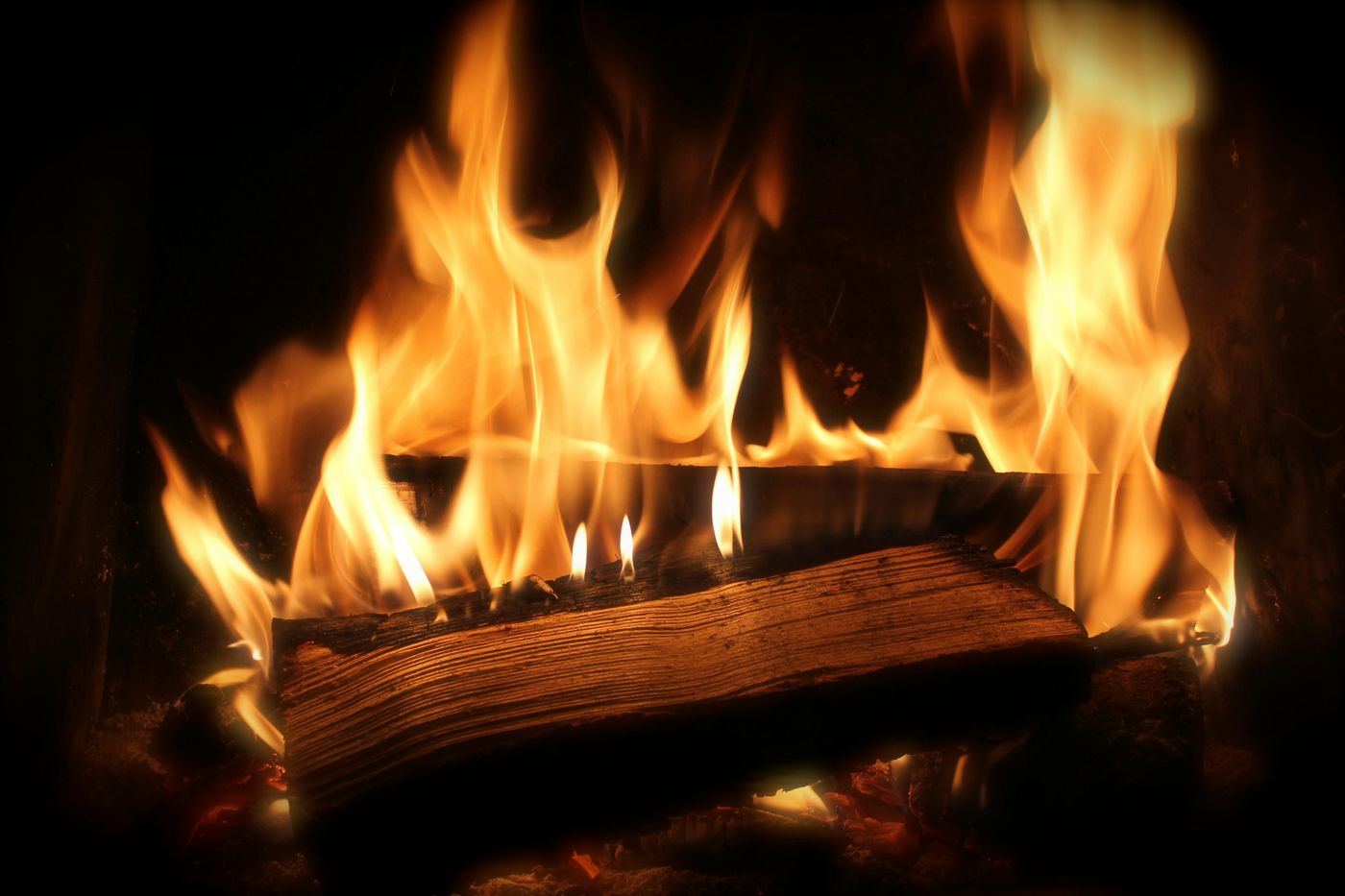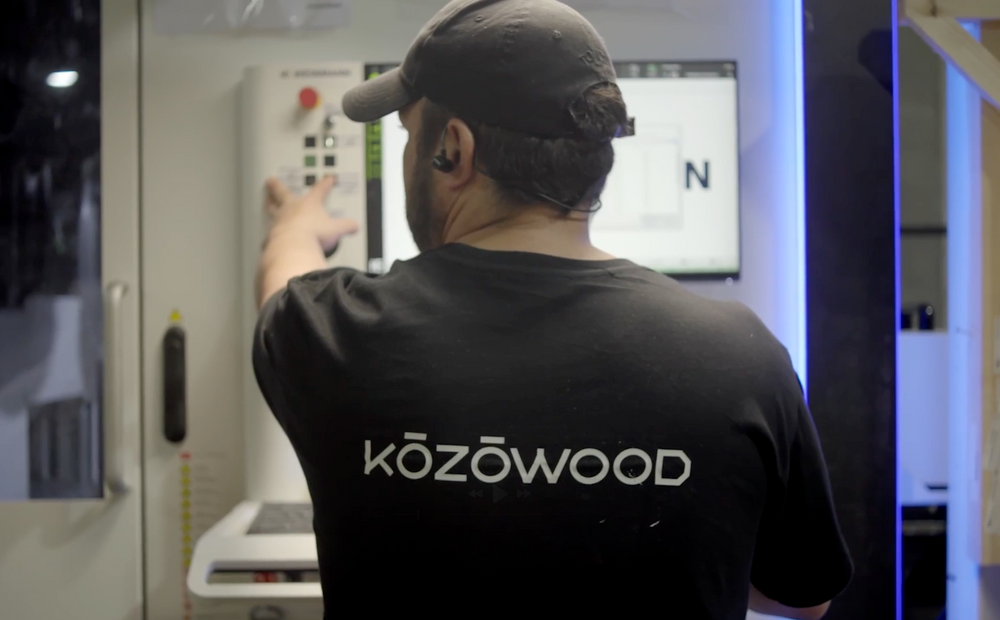(01)
Fire Resistance
Fire Resistance in Wood Construction
Natural Fire Resistance Properties
Wood has a natural characteristic that makes it a safe option in case of fire: when exposed to high temperatures, the surface of the wood forms a charcoal layer that acts as an insulating barrier. This layer prevents heat from penetrating the inner layers of the structure, keeping the core protected for a longer time and delaying the collapse of the building. This phenomenon is distinct when compared to materials like steel, which deforms quickly under high temperatures, or concrete, which can explode due to internal water pressure.
For residential and commercial buildings, this feature is a significant advantage, as it allows occupants more time to safely evacuate the building in the event of a fire. Additionally, wood reacts predictably to fire, making planning and structural calculations easier to ensure greater safety.
Fire-Retardant Treatments and Technological Advancements
With advancements in construction technology, wood has started being treated with flame retardants, enhancing its natural fire resistance. These chemical products are applied to the wood during the manufacturing process, creating an additional barrier against the spread of flames. These treatments ensure that wood meets European fire safety standards.
Fire-retardant treatments are becoming increasingly accessible and widely used, particularly in wood constructions aiming to meet rigorous safety certifications. Additionally, advanced engineering solutions, such as the use of Cross-Laminated Timber (CLT), provide wood structures with added robustness, enabling the construction of multi-story buildings with greater fire resistance.
Certifications and European Safety Regulations
In the construction sector, compliance with fire safety regulations is mandatory. In the European Union, certifications like PEFC and FSC ensure that the wood used comes from sustainable forests and has undergone fire-resistance treatments, guaranteeing the safety of the materials. Companies working with certified wood demonstrate a commitment to both safety and sustainability, increasing consumer trust in wooden constructions as a safe and responsible choice.
(02)
Resistance to Earthquakes
Wood Resistance to Earthquakes
Flexibility and Impact Absorption Capacity
Wood is naturally flexible, allowing wooden constructions to effectively absorb and dissipate seismic energy. This characteristic reduces the risk of structural damage during an earthquake, making wooden houses an ideal choice for regions prone to seismic activity. The flexibility of wooden buildings enables them to withstand tremors and vibrations with a lower risk of cracks or collapse.
Advanced Structural Techniques: Timber Frame and CLT
Timber Frame and CLT (Cross-Laminated Timber) construction techniques have been revolutionary in wooden construction, especially regarding structural resistance in earthquake-prone environments. The Wood Frame system uses a skeleton of wood formed by beams and studs, creating a lightweight, flexible structure that evenly distributes weight and seismic load. This flexibility allows the structure to absorb the energy from tremors, reducing the impact on individual components and minimizing the likelihood of cracks and structural damage. Houses built with Timber Frame are designed to move slightly during an earthquake, which reduces the force that could lead to collapse.
On the other hand, CLT, or cross-laminated timber, represents a highly advanced and reliable engineering technique. In this method, layers of wood are arranged in alternating directions and then glued together, forming solid, robust panels that combine stiffness and flexibility. This cross-lamination provides considerable resistance to lateral forces, such as those caused by earthquakes. CLT allows for the construction of extremely strong walls, floors, and roofs, with superior stability, even in multi-story buildings. These panels can withstand movements and vibrations while keeping the structure stable and safe.
The combination of Timber Frame and CLT allows architects and engineers to create large-scale wooden buildings, overcoming traditional limitations and ensuring the necessary strength to meet modern safety requirements. Additionally, both techniques contribute to faster and more efficient construction, with a modular assembly that reduces construction time and waste, while promoting a sustainable and environmentally conscious approach.
Studies and Results of Seismic Tests
Recent tests have demonstrated the impressive earthquake resistance of wooden structures, especially those built with CLT. A notable example is the NHERI TallWood Project in Japan, where a seven-story wooden building was subjected to intense shaking simulations on a vibration table and remained structurally intact. This test highlighted wood's ability to withstand high seismic forces, reinforcing confidence in the use of this material in seismic-risk zones.
Another significant milestone is the Tallwood Project in the United States, where a ten-story cross-laminated timber (CLT) structure was tested at the University of California, San Diego. This building was subjected to severe seismic simulations, such as those from the Northridge (magnitude 6.7) and Chi-Chi (magnitude 7.7) earthquakes. The construction employed advanced technologies, such as post-tensioned steel bars (with steel elements inserted to reinforce resistance to seismic forces) and U-shaped flexible plates, which absorb seismic forces and allow the building to return to its original position after the event, eliminating the need for demolition. Sensors recorded crucial data that will enable the creation of digital models to design wooden buildings with proven safety in seismic zones.
These examples reinforce the potential of wood as a safe, sustainable, and resilient structural solution for buildings in seismic areas. The data obtained encourages the adoption of wooden buildings in large-scale projects, as in some countries, such as the U.S., regulations already permit the construction of taller buildings with wood, recognizing its seismic safety and environmental benefits.
More information:
(03)
Role of Kozowood
Kozowood: Reliable and Sustainable Solutions
Kozowood is a leader in the construction of wooden houses and buildings, known for its innovation, safety, and environmental responsibility in all its projects. Using advanced techniques like Timber Frame and CLT, the company not only ensures the durability and aesthetics of buildings but also provides robust protection against fires and high seismic resistance.
To ensure fire safety, the wooden structures receive fire-retardant treatments that allow the formation of a protective layer, delaying the spread of flames and enhancing safety during emergencies. This type of protection is crucial for complying with safety regulations and providing occupants with the necessary time for evacuation, while protecting the structure for extended periods.
Seismic resistance is also a priority in Kozowood’s projects. With Timber Frame and CLT technologies, wooden buildings gain flexibility and strength, allowing them to absorb and dissipate seismic energy without compromising stability. This adaptability in the structures reflects Kozowood's commitment to construction that combines safety and sustainability, contributing to the development of resilient buildings ideal for seismic areas.
In addition to advancements in safety, all materials used by Kozowood come from certified and sustainable sources, aligning with Net Zero goals and environmental targets. The use of certified wood reduces the carbon footprint of buildings and extends the life cycle of materials, minimizing environmental impact and promoting the conservation of natural resources.
Kozowood combines technology, safety, and a strong commitment to sustainability, creating residential and commercial projects that are both elegant, safe, and aligned with the goals of a carbon-neutral future. Each wooden construction by Kozowood reflects a deep dedication to technical excellence and respect for the environment, offering solutions that meet the demands of an increasingly conscious market committed to sustainability.
(04)
F.A.Q. - Frequently Asked Questions?
What is Certified Wood?
Certified wood comes from forests that are managed sustainably and responsibly, following strict environmental standards aimed at protecting biodiversity and natural resources. Certifications such as FSC (Forest Stewardship Council) and PEFC (Programme for the Endorsement of Forest Certification) ensure that the wood used in construction meets environmental, social, and economic standards, promoting sustainable practices.
What does Durability in Wood Construction Mean?
Durability in Wood Construction refers to the ability of structures to resist wear and the effects of the environment, such as humidity and pests, over time. Durability can be enhanced through specific treatments and the use of high-quality wood, ensuring that wood constructions maintain their safety and stability for decades.
What is Fire Treatment?
Fire treatment refers to the application of chemical products to wood to enhance its fire resistance. These flame retardants, applied during the wood production process, create a barrier that reduces the material's flammability, slowing the spread of fire and increasing the safety of the structure. These treatments are essential to ensure that wood complies with fire safety standards.

